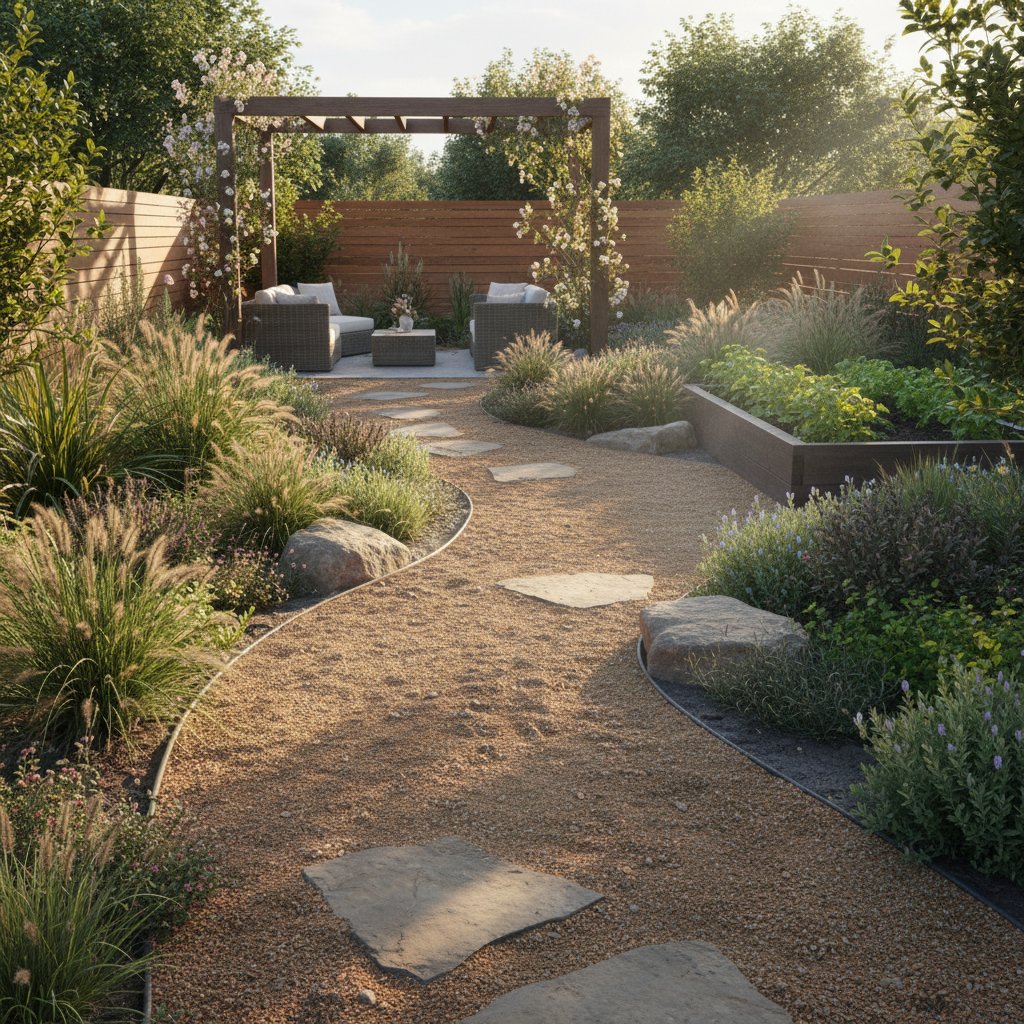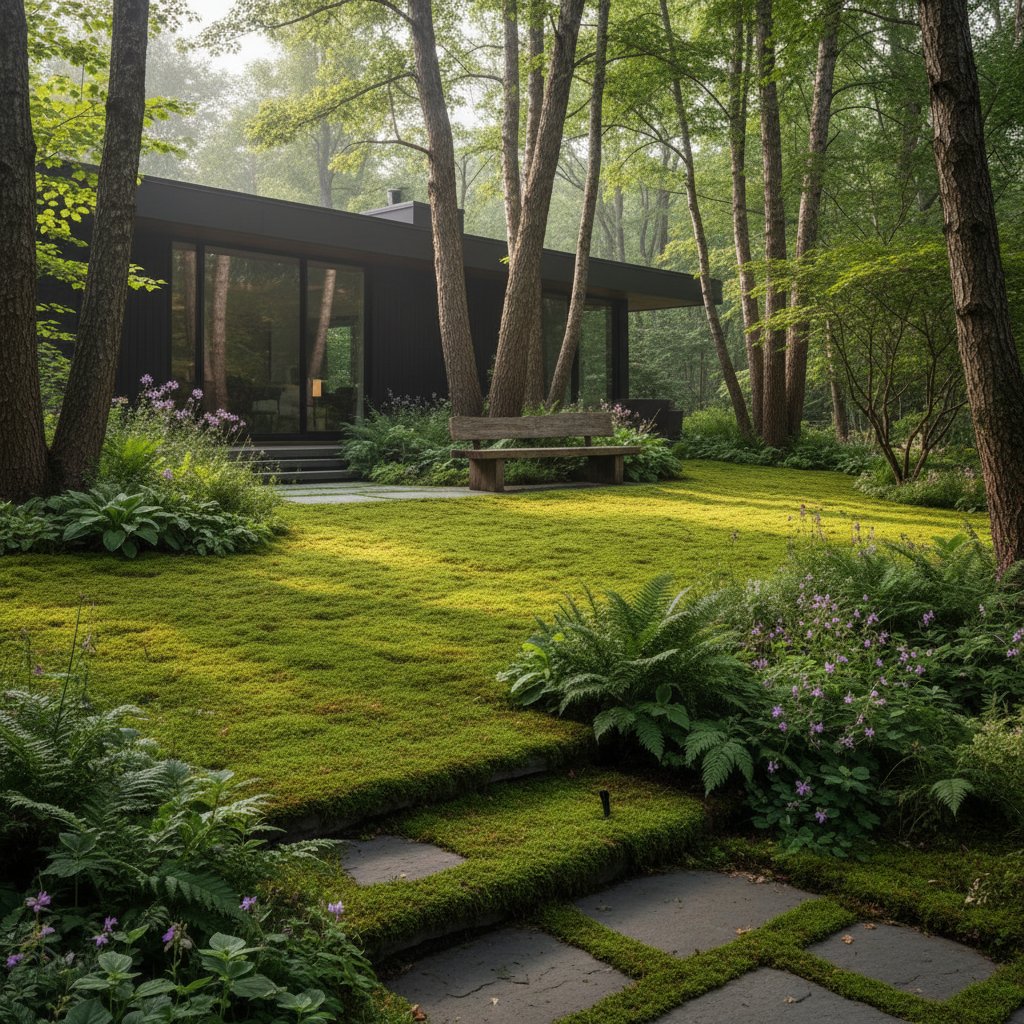Why Decomposed Granite Transforms Backyard Paths
Gardens often leave lasting impressions through the paths that weave among plants and features. Consider a backyard where the gentle crunch underfoot signals decomposed granite at work. This material creates a sense of vitality and belonging, highlighting how choices in surfacing influence both function and emotion in outdoor spaces. Decomposed granite, known among professionals as DG, turns ordinary walkways into enduring elements that invite exploration.
Understanding Decomposed Granite
Decomposed granite originates from granite rock broken down by natural weathering into particles of gravel, sand, and silt. Textures range from fine grit to coarser grains, depending on the quarry source. Colors span golden tan, warm gray, and reddish brown, allowing harmony with local soils and rocks. Compaction yields a stable surface with excellent drainage, a balance uncommon in many outdoor options.
Homeowners frequently evaluate decomposed granite against concrete, pavers, or loose gravel. Concrete provides permanence but often appears stark in natural settings. Pavers offer defined patterns yet disrupt organic lines. Loose gravel shifts easily, creating instability. Decomposed granite occupies a practical middle ground, delivering organic stability when properly installed.
The Appeal of Texture and Tone
Paths of decomposed granite possess a subdued elegance. Light diffuses gently across the surface, while earthy hues enhance nearby elements. Unlike reflective white gravel that causes glare, decomposed granite tempers sunlight, deepening the vibrancy of green leaves and accentuating terracotta accents.
This material engages the senses during traversal. The subtle sound and feel underfoot anchor the experience, fostering mindfulness. Such details infuse gardens with vitality and presence.
Practical Benefits Beyond Beauty
Decomposed granite excels in functionality for backyard applications. Its permeable nature allows water to infiltrate, minimizing runoff and supporting soil health. In regions prioritizing conservation, this trait supports eco-friendly practices.
Maintenance remains minimal with correct setup. Rake periodically to level the surface and replenish material every few years as needed. Unlike rigid surfaces, it avoids cracks or invasive weeds, and adjustments require only basic tools.
Cost-effectiveness adds appeal. Decomposed granite typically costs less than pavers or concrete in materials and installation. Production demands fewer resources than cement processes, reducing environmental impact. For those seeking natural aesthetics without irreversible changes, it presents an ideal option.
Choosing Between Loose and Stabilized Decomposed Granite
Decomposed granite appears in loose or stabilized forms, each suited to specific uses. Loose decomposed granite spreads and compacts without additives, ideal for casual paths or lounging zones where a yielding surface enhances informality. It adapts to light foot traffic but may displace under heavy rain or use.
Stabilized decomposed granite incorporates a natural resin or binder during mixing, promoting particle adhesion for greater durability. This version suits high-traffic routes like entryways, resisting wear and erosion. Select based on anticipated activity: loose for meandering trails amid foliage, stabilized for structured promenades.
Blending Decomposed Granite with the Landscape
Decomposed granite adapts effortlessly to diverse garden aesthetics. In native or wild settings, it merges as if inherent to the earth. For contemporary designs, pair it with edging to sharpen boundaries. Color choices align with themes, such as golden shades for arid gardens or grays for woodland retreats.
Edging prevents migration into adjacent areas. Options include steel for a modern edge, brick for warmth, or stone for timelessness. These borders not only contain the material but also define the path's character, from subtle integration to bold delineation.
Installation Insights from Experience
Effective installation of decomposed granite begins with site preparation. Excavate to a depth of four to six inches, then add and compact a two-inch layer of crushed stone base for support and drainage. Spread three to four inches of decomposed granite, compacting in lifts with a vibrating plate or tamper while misting lightly to aid settling.
Thorough compaction ensures longevity. Test by walking the path to identify and correct soft areas. The result yields a firm yet flexible surface, distinct from unyielding alternatives.
Comparing Decomposed Granite with Other Gravel Alternatives
Decomposed granite contrasts with options like pea gravel, crushed rock, and limestone fines, each with unique traits.
- Pea gravel features smooth, rounded stones that cushion steps but migrate easily, best for decorative borders rather than primary paths.
- Crushed rock provides angular pieces that interlock firmly, offering stability without the nuanced earthiness of decomposed granite.
- Limestone fines form dense, hardpack surfaces that dust in dry conditions and solidify rigidly after moisture.
Decomposed granite balances these qualities, merging solidity, drainage, and natural appeal with straightforward upkeep.
Extending Decomposed Granite Throughout Your Garden
Established decomposed granite paths evolve subtly, gaining patina from environmental integration. Dust and debris enrich the tone over seasons. Routine sweeping maintains neatness, while minor imperfections enhance authenticity.
Expand its use to patios, surrounds for fire features, or bed perimeters for unity. Consistent application across zones guides the gaze, promoting seamless transitions and overall cohesion.
Selecting and Installing for Lasting Impact
Evaluate path materials by desired sensory and visual effects. Decomposed granite promotes deliberate movement and earthly connection, enriching garden journeys. Consult local suppliers for region-specific varieties, and plan installation during dry weather to optimize results.



